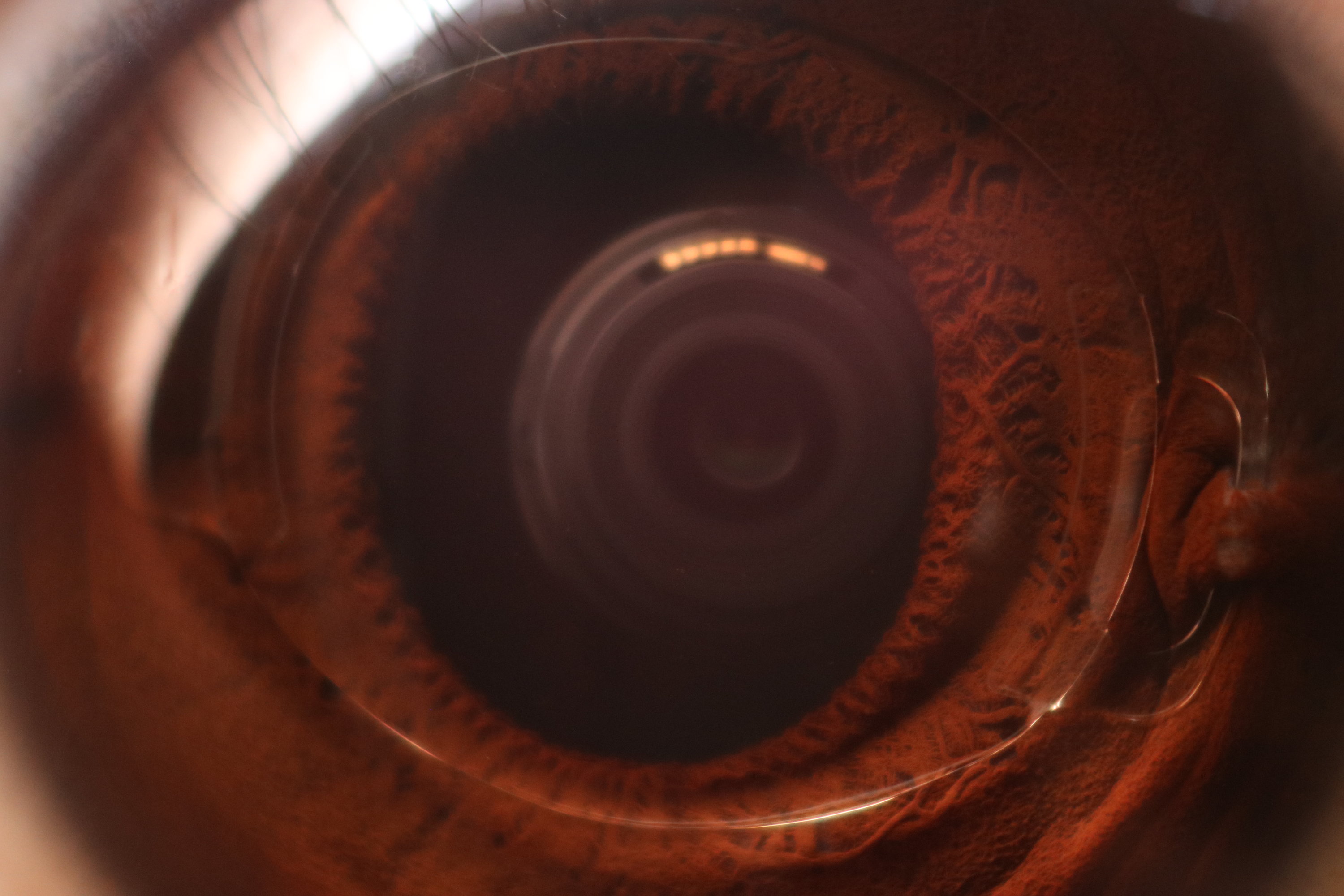Using corneal measurements to create a customized intraocular lens resulted in better contrast sensitivity for patients.

A photo of an pseudophakic eye with an posteriorly located intraocular lens. (Source via CC 4.0)
Spherical aberration is a combination of the positive and negative contributions from the cornea and the lens. While that of the cornea remains fairly constant, the lens aberration increases with age. The lens refractive error can be corrected by an artificial intraocular lens (IOL). Most IOLs today are aspheric and aberration-free, but research has been aimed at personalizing the IOL to create aberration-correcting IOLs. This is towards the goal of improving visual acuity, photopic contrast sensitivity, and mesopic contrast sensitivity.
In this prospective clinical study, patients due for cataract surgery were randomized to receive either an aberration-correcting IOL (57 eyes, 42 patients) or an aberration-free IOL (29 eyes, 27 patients). The lenses was a mnofocal 1-piece hydrophilic acrylic IOL with C-loop haptics. For the aberration-correcting IOL, corneal data from high-resolution Scheimpflug tomography was used to design the IOL surface.These patients were evaluated 4 weeks and then 3 months post-operatively.
The findings showed that although there was no difference between the pre-operatively corneal spherical aberration in the two groups, the residual post-operative ocular spherical aberration was significantly lower in those who received an aberration-correcting IOL.
Meanwhile, contrast sensitivity was better in the first group, and the IOL type implanted did not affect distance, intermediate, and near visual acuity. There was also no noted decreased depth of focus, although this has been previously reported in other studies.
There is still some discussion as to what is the residual target aberration should be, as well as some potential limiting factors for individualizing an IOL. These factors include the accuracy of corneal measurements and IOL calculations, IOL manufacturing methods, and surgical and post-surgical decentration. Regardless, personalizing the IOL for cataract surgery can improve functional vision. This avenue is to be pursued as the future of medicine becomes even more centered on the patient.
Schrecker, J., Langenbucher, A., Seitz, B., & Eppig, T. (2018). First results with a new intraocular lens design for the individual correction of spherical aberration. Journal of Cataract and Refractive Surgery, 44(10), 1211-1219. doi: 10.1016/j.jcrs.2018.06.055